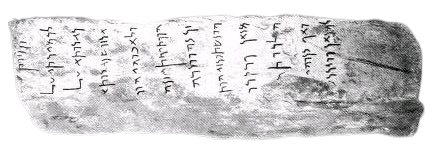Aramaic and Hebrew are very closely related Semitic language like ,say, Italian and Spanish sharing a lot of common vocabulary and grammar.
They are both written in the Assyrian script -the Ktav ashuri.
 |
| Ktav ashuri, the Assyrian script. |
The Hebrew alphabet developed from the Aramaic one which in turn evolved from Phoenician.
Aramaic was the mother tongue of the Arameans initially but after the conquests and policies of the Assyrian Empire followed by the Persian Empire it became the mother tongue of Hebrews also.
Hebrew in reality has long gone extinct replaced by Aramaic after Jews were exiled in Babylon. Modern Hebrew is a very successful revival of the old language not spoken for two thousand years.
It is actually a reconstruction of what was perceived by Ben Yahuda as the Hebrew language.
Hebrew continued to be used as a liturgical language after it is ceased to be spoken. Aramaic ,the spoken languages of the Jews at the time, influenced Biblical Aramaic as can be seen in the Talmuds.
The history of these two languages is intertwined. In antiquity the name Hebrew was often used for Aramaic.
Though these modern languages have grown apart greatly following a different path in history.
Syriac Aramaic became the language of the Syriac Aramaic Christianity setting it apart from the Jewish tradition.
Nowadays only Biblical Aramaic is of importance to the Jews since both parts of the Old Testament and the Targums are written in Aramaic.
There are differences in syntax and grammar between Aramaic and Hebrew
For example the article in Hebrew is placed at the beginning of the word while in Neo-Aramaic languages is placed at the end:
Ha’lekhem (Hebrew)- Lekhm ‘ah’ (Aramaic)
The bread
There is a consonant shift. The tav in Aramaic corresponds to the shin in Hebrew.
Hebrew (shum) שום
Aramaic (tum [ah]) ܬܘܡܐ
garlic
